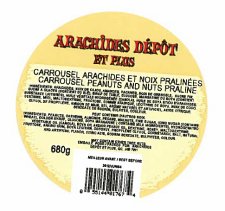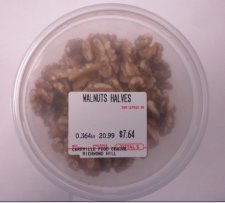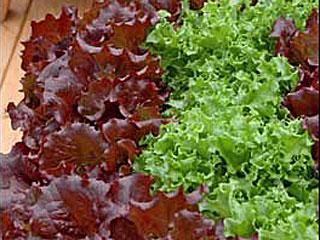The Romaine-lettuce-served-at-Schnucks-salad-bars E. coli O157:H7 outbreak that sickened 58 people in the Midwest last fall has received the final-write-up treatment from the U.S. Centers for Disease Control, with many questions unanswered.
In the excerpts below, Chain A is Schnucks, and the farm the lettuce was traced to Farm A, although one Missouri health type at the time said a grower in California was suspected of being connected but records were “insufficient to complete the picture.”
Yes, there are vast limitations when conducting a food safety outbreak investigation, but the public reporting of this outbreak still reeks of the Leafy Greens Cone of Silence – that the most noticeable achievement since the California Leafy Greens Marketing Agreement was created in the wake of the 2006  E. coli O157-in-spinach mess is the containment cone of silence that has descended upon outbreaks involving leafy greens.
E. coli O157-in-spinach mess is the containment cone of silence that has descended upon outbreaks involving leafy greens.
Things didn’t sound quite right back on Oct. 28, 2011, when St. Louis County health officials first publicly confirmed that the source of the E. coli O157 strain that had sickened 23 people was foodborne, but that the investigation was ongoing. Though retailers had not been asked to pull any food, Schnucks voluntarily replaced or removed some produce in salad bars and shelves, beginning Oct. 26, 2011.
"Once we heard that the health department had declared an outbreak, we took some proactive steps with our food safety team to switch products out that recent history told us could be potential sources," said Schnucks spokeswoman Lori Willis.
A Schnucks store, Culinaria in downtown St. Louis, put a sign up on empty shelves that read in part, "Due to a voluntary recall on pre-packed lettuce, we will not be able to produce these pre-made salads. Be assured quality is our main concern. All of the lettuce on the salad bar is fresh and not involved with the recall."
A table of leafy green related outbreaks is available at http://bites.ksu.edu/leafy-greens-related-outbreaks.
The U.S. Center for Disease Control reports CDC collaborated with public health and agriculture officials in Missouri, other states, and the U.S. Food and Drug Administration (FDA) to investigate a multistate outbreak of Escherichia coli serotype O157:H7 infections linked to romaine lettuce. Public health investigators used DNA "fingerprints" of E. coli O157:H7 bacteria obtained through diagnostic testing with pulsed-field gel electrophoresis (PFGE) to identify cases of illness that may be part of this outbreak. They used data from PulseNet, the national subtyping network made up of state and local public health laboratories and federal food regulatory laboratories that performs molecular surveillance of foodborne infections.
As of March 21, 2012, 58 persons infected with the outbreak strain of E. coli O157:H7 were reported from 9 states. The number of ill persons identified in each state was as follows: Arizona (1), Arkansas (2), Illinois (9), Indiana (2), Kansas (2), Kentucky (1), Minnesota (2), Missouri (38), and Nebraska (1). Two cases were removed from the case count because advanced molecular testing determined that they were not related to this outbreak strain. Among persons for whom information was available, illnesses began from October 9, 2011 to November 7, 2011. Ill persons ranged in age from 1 to 94 years, with a median age of 28 years. Fifty-nine percent were female. Among the 49 ill persons with available information, 33 (67%) were hospitalized, and 3 developed hemolytic uremic syndrome (HUS). No deaths were reported.
This particular outbreak appears to be over.
Collaborative investigative efforts of state, local, and federal public health agencies indicated that romaine lettuce sold primarily at several locations of a single grocery store chain (Chain A) was the likely source of illnesses in this outbreak. Contamination likely occurred before the product reached grocery store Chain A locations.
During October 10 to November 4, 2011, public health officials in several states and CDC conducted an epidemiologic study by comparing foods eaten by 22 ill and 82 well persons, including 45 well persons who shopped at grocery store Chain A during the week of October 17, 2011. Analysis of this study indicated that eating romaine lettuce was associated with illness. Ill persons (85%) were significantly more likely than well persons (46%) to report eating romaine lettuce in the week before illness. Ill persons (86%) were also significantly more likely than well persons (55%) to report shopping at grocery store Chain A. (1)(1).jpg) Among ill and well persons who shopped at grocery store Chain A, ill persons (89%) were significantly more likely than well persons (9%) to report eating a salad from the salad bar at grocery store Chain A. Several different types of lettuce were offered on the salad bar at grocery store Chain A. Of 18 ill persons who reported the type of lettuce eaten, 94% reported eating romaine lettuce. No other type of lettuce or other item offered on the salad bar was reported to be eaten by more than 55% of ill persons.
Among ill and well persons who shopped at grocery store Chain A, ill persons (89%) were significantly more likely than well persons (9%) to report eating a salad from the salad bar at grocery store Chain A. Several different types of lettuce were offered on the salad bar at grocery store Chain A. Of 18 ill persons who reported the type of lettuce eaten, 94% reported eating romaine lettuce. No other type of lettuce or other item offered on the salad bar was reported to be eaten by more than 55% of ill persons.
Ill persons reported purchasing salads from salad bars at grocery store Chain A between October 5 and October 24, 2011. A total of 9 locations of grocery store Chain A were identified where more than one ill person reported purchasing a salad from the salad bar in the week before becoming ill. This included 2 separate locations where 4 ill persons reported purchasing a salad at each location. For locations where more than one ill person reported purchasing a salad from the salad bar and the date of purchase was known, dates of purchase were all within 4 days of other ill persons purchasing a salad at that same location. Chain A fully cooperated with the investigation and voluntarily removed suspected food items from the salad bar on October 26, 2011, out of an abundance of caution. Romaine lettuce served on salad bars at all locations of grocery store Chain A had come from a single lettuce processing facility via a single distributor. This indicates that contamination of romaine lettuce likely occurred before the product reached grocery store Chain A locations.
The FDA and several state agencies conducted traceback investigations for romaine lettuce to try to identify the source of contamination. Traceback investigations focused on ill persons who had eaten at salad bars at several locations of grocery store Chain A and ill persons at university campuses in Minnesota (1 ill person) and Missouri (2 ill persons). Traceback analysis determined that a single common lot of romaine lettuce harvested from Farm A was used to supply the grocery store Chain A locations as well as the university campus in Minnesota during the time of the illnesses. This lot was also provided to a distributor that supplied lettuce to the university campus in Missouri, but records were not sufficient to determine if this lot was sent to this university campus. Preliminary findings of investigation at Farm A did not identify the source of the contamination. Farm A was no longer in production during the time of the investigation.

.jpg) Pastures may not produce raw milk products for the retail market. The order also affects Organic Pastures raw butter, raw cream, raw colostrum, and a raw product labeled “Qephor.”
Pastures may not produce raw milk products for the retail market. The order also affects Organic Pastures raw butter, raw cream, raw colostrum, and a raw product labeled “Qephor.”.jpg) during summer months when water temperatures are most favorable for its growth.
during summer months when water temperatures are most favorable for its growth. products from the marketplace for example, see right), but yesterday mentioned Andersen and Sons Shelling, Vina, California, USA.
products from the marketplace for example, see right), but yesterday mentioned Andersen and Sons Shelling, Vina, California, USA.

 Listeria-stricken Maple Leaf Foods hasn’t posted anything new on its Journey-inspired
Listeria-stricken Maple Leaf Foods hasn’t posted anything new on its Journey-inspired  even though none of the walnuts have tested positive. The investigation is going on and we are co-operating fully with the government to make sure that nobody gets sick."
even though none of the walnuts have tested positive. The investigation is going on and we are co-operating fully with the government to make sure that nobody gets sick."
 known as filberts) purchased from bulk bins at retail food stores. Three cases have been identified in Minnesota, three in Wisconsin, and one in Michigan.
known as filberts) purchased from bulk bins at retail food stores. Three cases have been identified in Minnesota, three in Wisconsin, and one in Michigan. cilantro sold in grocery stores may be contaminated with salmonella.
cilantro sold in grocery stores may be contaminated with salmonella. Southern California, according to California Department of Public Health director Dr. Mark Horton.
Southern California, according to California Department of Public Health director Dr. Mark Horton.  Then Amy barfed.
Then Amy barfed.